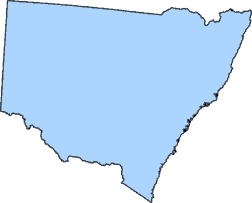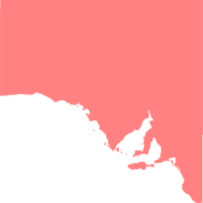Septic Tank Regulations
Do You Know Your Local Septic Tank Regulations
Onsite wastewater management systems (Septic Tank Systems) are used on residential, community, rural and commercial premises. In each state of Australia the regulations for a onsite wastewater treatment can be very different. That’s why we have added all the councils we have dealt with since 1996 with links to help you understand your local council septic tank regulations.
Septic Tank Systems are designed to treat, then recycle or dispose of:
- Greywater, which comes from showers, baths, hand basins, washing machines, laundry troughs and kitchens
- Blackwater, which is toilet waste
- Sewage, which is combined greywater and blackwater
- Organic Waste – Only our Worm Farm Septic System can handle all your household organic waste.
Septic tank systems must perform effectively and be well managed to minimise risks to public health and the environment. They must also meet your local councils septic tank code of practice. The requirements on you septic system depend on the source of the wastewater, site constraints, treatment method and the quality of effluent needed for the end uses of the treated water.
Common Septic Tank Regulations
- Wastewater treated to primary quality is only suitable for disposal below ground via soil absorption trenches, mounds and evapo-transpiration beds or trenches.
- Wastewater treated to secondary quality can also be dispersed to land via pressure-compensating subsurface irrigation.
- Greywater treated to advanced-secondary quality can be used in the home for flushing toilets and in washing machines. It can also be used for surface and subsurface irrigation.
- You will need local council approval to install the system.
- You will also need approval to operate your septic system.
Care and Operation of Your Septic Tank
If you do not have a Worm Farm Septic Tank these tips for the care and operation of your septic tank maybe helpful.
- Restrict the use of germicides (such as strong detergents, disinfectants, toilet cleaners and bleaches), as they will kill the bacteria which makes the septic tank work.
- Use soapy water to clean toilets and other fixtures
- Use only detergents that have low alkaline salts and chlorine levels.
- Odours may occur on installation or after addition of large quantity of germicide. If this happens, flush a cup of lime down the toilet each day until odours abate.
- Use of proprietary or chemical additives is not recommended at any time for septic systems – except for lime when used to remove odours.
- Do not flush sanitary napkins or disposable nappies down the system.
- Minimise the amounts of oil and fat flushed into the system.
- Use a sink strainer to restrict food scraps entering the septic system. Do not use garbage disposal units.
- Fill tank with water to reduce odours on start up or after desludging tanks. They should not be washed or disinfected after desludging.
- Ensure the tank and disposal field are not built over or disturbed.
- Inspect the system at least annually and desludge the tank at least once every three years, or as otherwise directed by the council.
Septic Tank Regulations by State
Each state will have its own septic tank code of practice and these can be confusing.
If you have any questions please contact us. We are here to help.

VIC

NSW

QLD

SA
Councils We Have Worked With
Over 240 Councils means we are experts at obtaining Septic Tank Permits
If you are still confused about which septic tank code of practice applies to your particular situation then give us a call on 03 5979 1887 an we’ll be happy to answer any concerns you might have about your septic system.
Please note, local councils can change their website links and information without notice.
VIC
Alpine Shire Council
Ararat Rural City
Ballarat
Banyule City Council
Bass Coast
Baw Baw Shire Council
Benalla Rural City
Bendigo
Brimbank City Council
Buloke Shire Council
Campaspe
Cardinia
Casey
Central Goldfields Shire Council
Colac Otway Shire
Corangamite Shire
Frankston City Council
Gannawarra Shire Council
Geelong
Glenelg Shire
Gippsland East
Gippsland South
Golden Plains Shire
Grampians Northern
Grampians Southern
Hepburn Shire Council
Hindmarsh Shire Council
Horsham Rural City Council
Hume City Council
Indigo Shire Council
Kingston
Knox City Council
Latrobe City
Loddon Shire
Macedon Ranges Shire Council
Manningham City Council
Mansfield Shire Council
Maroondah City Council
Melton
Mildura Rural City Council
Mitchell Shire Council
Moira Shire
Moorabool Shire Council
Mornington Peninsula Shire
Mount Alexander Shire Council
Moyne Shire
Murrindindi Shire Council
Nillumbik Shire Council
Pyrenees Shire Council
Shepparton
Strathbogie
Surf Coast Shire
Swan Hill Rural City Council
Towong Shire
Wangaratta
Warrnambool City Council
Wellington Shire Council
West Wimmera Shire Council
Whittlesea
Wodonga
Wyndham City Council
Yarra Ranges Council
Yarriambiack Shire Council
NSW
Armidale Regional Council
Ballina Shire Council
Balranald Shire Council
Bathurst Regional Council
Bega Valley Shire Council
Bellingen Shire Council
Berrigan Shire
Bland Shire Council
Blayney Shire Council
Blue Mountains City Council
Bogan Shire Council
Bourke Shire Council
Brewarrina Shire Council
Broken Hill City Council
Byron Shire Council
Cabonne Council
Camden Council
Campbelltown City Council
Carrathool Shire Council
Central Coast Council-Wyong
Central Coast Council-Gosford
Central Darling Shire Council
Cessnock City Council
Clarence Valley Council
Cobar Shire Council
Coffs Harbour City Council
Coolamon Shire Council
Coonamble Shire Council
Cootamundra-Gundagai
Cowra Council
Dubbo Regional Council
Dungog Shire Council
Edward River Council
Eurobodalla Shire Council
Fairfield City Council
Federation Council
Forbes Shire Council
Gilgandra Shire Council
Glenn Innes Severn Council
Goulburn Mulwaree Council
Greater Hume Shire Council
Griffith City Council
Gunnedah Shire Council
Gwydir Shire Council
Hawkesbury City Council
Hay Shire Council
Hilltops Council
Hornsby Shire Council
Inverell Shire Council
Junee Shire Council
Kempsey Shire Council
Kiama Municipal Council
Kyogle Council
Lachlan Shire Council
Lake Macquarie City Council
Leeton Shire Council
Lismore City Council
Lithgow City Council
Liverpool City Council
Liverpool Plains Shire Council
Lockhart Shire Council
Maitland City Council
Midcoast Council
Mid-Western Regional Council
Moree Plains Shire Council
Murray River Council
Murrumbidgee Council
Muswellbrook Shire Council
Nambucca Shire Council
Narrabri Shire Council
Narrandera Shire Council
Narromine Shire Council
Newcastle City Council
Northern Beaches Council
Oberon Council
Orange City Council
Parkes Shire Council
Penrith City Council
Port Macquarie-Hastings Council
Port Stephens Council
Queanbeyan-Palerang Regional Council
Randwick City Council
Richmond Valley Council
Shellharbour City Council
Shoalhaven City Council
Singleton Council
Snowy Monaro Regional Council
Snowy Valleys Council
Sutherland Shire Council
Tamworth Regional Council
Temora Shire Council
Tenterfield Shire Council
The Hills Shire Council
Tweed Shire Council
Upper Hunter Shire Council
Upper Lachlan Shire Council
Uralla Shire Council
Wagga Wagga City Council
Walcha Council
Walgett Shire Council
Warren Shire Council
Warrumbungle Shire Council
Weddin Shire Council
Wentworth Shire Council
Wingecarribee Shire Council
Wollondilly Shire Council
Wollongong City Council
Yass Valley Council
QLD
Banana Shire Council
Brisbane City Council
Bundaberg Regional Council
Fraser Coast Regional Council
Gold Coast
Gympie Regional Council
Ipswich
Logan City Council
Moreton Bay Regional Council
Noosa Council
North Burnett Regional Council
Redland City Council
Scenic Rim Regional Council
Somerset Regional Council
South Burnett Regional Council
Southern Downs Regional Council
Sunshine Coast Council
Toowoomba Region
Western Downs Regional Council
SA
Adelaide Hills Council
Adelaide Plains Council
Alexandrina Council
Barossa Council
Barunga West District Council
Berri Barmera Council
Clare and Gilbert Valleys Council
Cleve District Council
Coorong District Council
Copper Coast Council
Flinders Ranges Council
Franklin Harbour District Council
Gawler Council
Goyder Regional Council
Grant District Council
Kangaroo Island Council
Karoonda East Murray District
Kingston District Council
Light Regional Council
Loxton Waikerie District Council
Mitcham City Council
Mount Barker District Council
Mount Gambier City Council
Mount Remarkable District Council
Murray Bridge Rural City
Murray Mid Council
Naracoorte Lucindale Council
Northern Areas Council
Onkaparinga City Council
Orroroo Carrieton District Council
Peterborough District Council
Playford City Council
Port Adelaide Enfield City Council
Port Augusta City Council
Port Lincoln City Council
Port Pirie Regional Council
Renmark Paringa Council
Robe District Council
Salisbury City Council
Southern Mallee District Council
Tatiara District Council
Tea Tree Gully City Council
Tumby Bay District Council
Victor Harbor City Council
Wakefield Regional Council
Wattle Range Council
Whyalla Council
Yankalilla District Council
Yorke Peninsula Council
Considering A Septic Tank System
Contact us today and we’ll give the best advice on which septic tank regulations apply to your site
Before you go here’s why 3000+ customers use a Worm Farm Septic Tank System
- Established in 1996
- Over 3000 systems installed in Australia
- Single chamber with low site impact
- Low running costs. $20 per year based on a 4 bedroom house
- You will not be locked into a service contract
- 10 Year System Warranty
- No smells
- Operates 20 times faster than septic or aerated systems in processing sewage solids
- Our pumps are very quiet & only activated by demand
- Residential, Commercial & Rural Systems
- Approved in VIC, NSW, SA, QLD & NT
- We help with Council Permit Applications - ‘We talk council speak’
- Suitable for all climates, desert, tropical, alpine and temperate
- Company employed installers are used to install your system
- Environmentally friendly and sustainable
- Natural liquid fertiliser is added into your soil, opening up clay soils 100mm vertically per year
- Can reduce household organic waste by up to 90%
- Many site specific effluent dispersal options
- We can retrofit to your existing system
- Aerobic system with a wind driven vent to super charge your septic tank
- Weed control – Dispose of ragwort, dock, thistle
All our residential systems come with a Child Proof Entry

